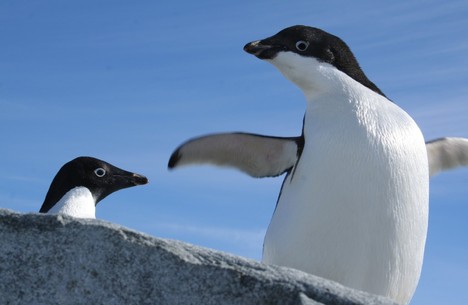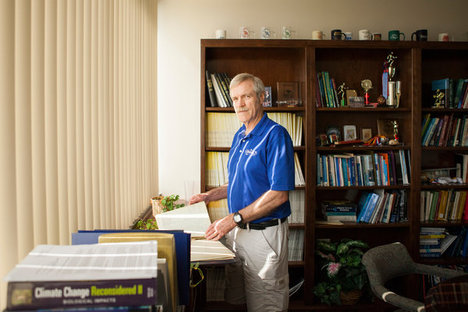(p. B1) Is the American approach to combating climate change going off the rails?
Last year, President Obama set a goal of reducing carbon emissions by as much as 28 percent from 2005 levels by 2025, only 10 years from now.
Now, environmental experts are suggesting that some parts of the strategy are, at best, a waste of money and time. At worst, they are setting the United States in the wrong direction entirely.
That is the view of some of the world’s top environmental organizations, including Greenpeace, Friends of the Earth and the Sierra Club. On Tuesday, they argued in a letter to the White House that allowing the burning of biomass to help reduce consumption of fossil fuels in the nation’s power plants, as proposed by the Environmental Protection Agency, would violate the Clean Air Act.
It’s also the view of economists from the University of Chicago and the University of California, Berkeley, who on Tuesday released the disappointing results of a field test of the federal Weatherization Assistance Program, the government’s largest effort to improve residential energy efficiency.
It turns out that burning biomass — wood, mainly — for power produces 50 percent more CO2 than burning coal. And even if new forest growth were to eventually suck all of it out of the atmosphere, it would take decades — perhaps more than a century — to make up the difference and break even with coal.
One study commissioned by the state of Massachusetts concluded that the climate impacts of burning wood were worse than those for coal for 45 years, and (p. B8) worse than for natural gas for about 90 years. Humans do not have that kind of time.
The energy efficiency push has a different problem: It is much too expensive. The weatherization improvements cost more than twice as much as households’ energy savings. Even after including the broad social benefits from less pollution, it was still a bad deal. Indeed, the program spent $329 per ton of CO2 it kept out of the air, some eight times as much as the administration’s estimate of the social cost of damages caused by carbon.
These are not small setbacks. Most of the scenarios that keep the rise in global temperatures under a 2 degree Celsius ceiling, the point at which scientists fear the risk of climate upheaval rises significantly, rely heavily on bioenergy, including biomass for power generation and other biofuels, which face similar problems.
For the full commentary, see:
Eduardo Porter. “ECONOMIC SCENE; Climate Change Calls for Science, Not Hope.” The New York Times (Sun., JUNE 24, 2015): B1 & B8.
(Note: the date of the online version of the commentary is JUNE 23, 2015, and has the title “ECONOMIC SCENE; Climate Change Calls for Science, Not Hope.”)
The letter to the Obama administration from many environmental organizations, including Friends of the Earth, Greenpeace and the Sierra Club, is:
http://www.pfpi.net/wp-content/uploads/2015/06/Groups-bioenergy-letter-to-OMB-6-23-15.pdf
The research mentioned above by economists from Berkeley and the University of Chicago, is:
Fowlie, Meredith, Michael Greenstone, and Catherine Wolfram. “Do Energy Efficiency Investments Deliver? Evidence from the Weatherization Assistance Program.” Working Paper, The Becker-Friedman Institute for Research in Economics, The University of Chicago, June 2015.
The research mentioned above that was commissioned by the state of Massachusetts, is:
Walker, Thomas , Dr. Peter Cardellichio, Andrea Colnes, Dr. John Gunn, Brian Kittler, Bob Perschel, Christopher Recchia, and Dr. David Saah. “Biomass Sustainability and Carbon Policy Study, Executive Summary.” Manomet, MA: Manomet Center for Conservation Sciences, June 2010.


